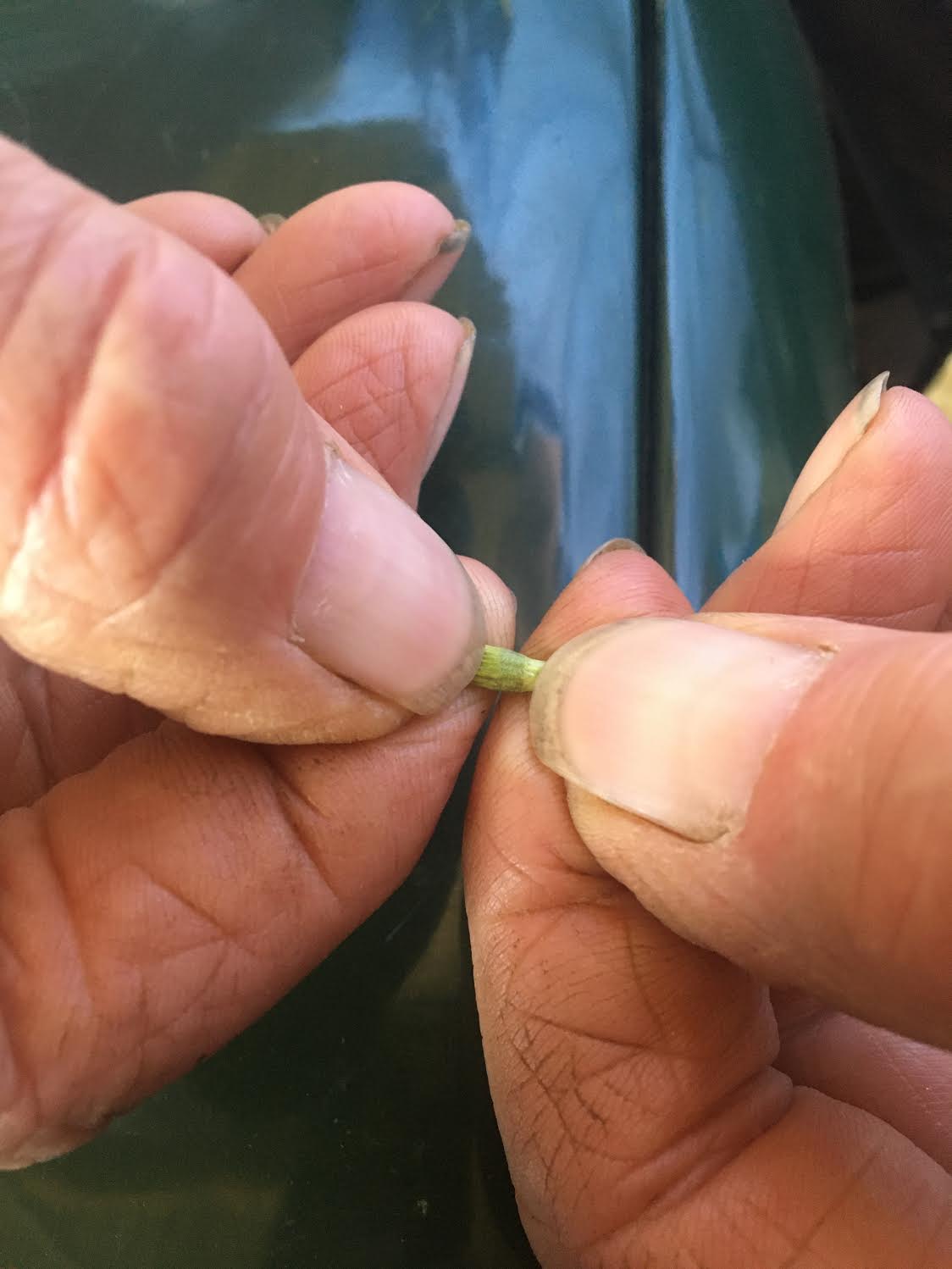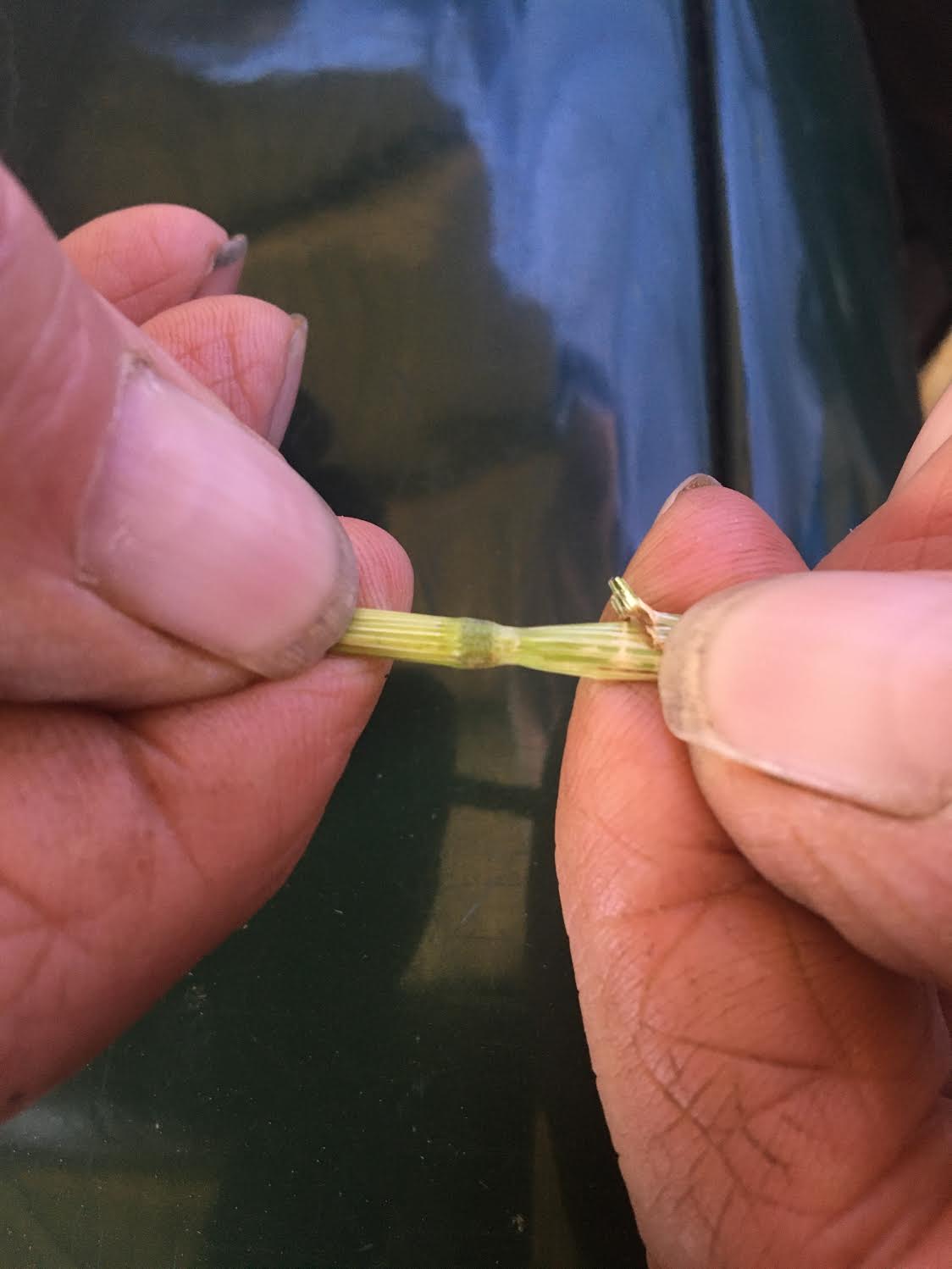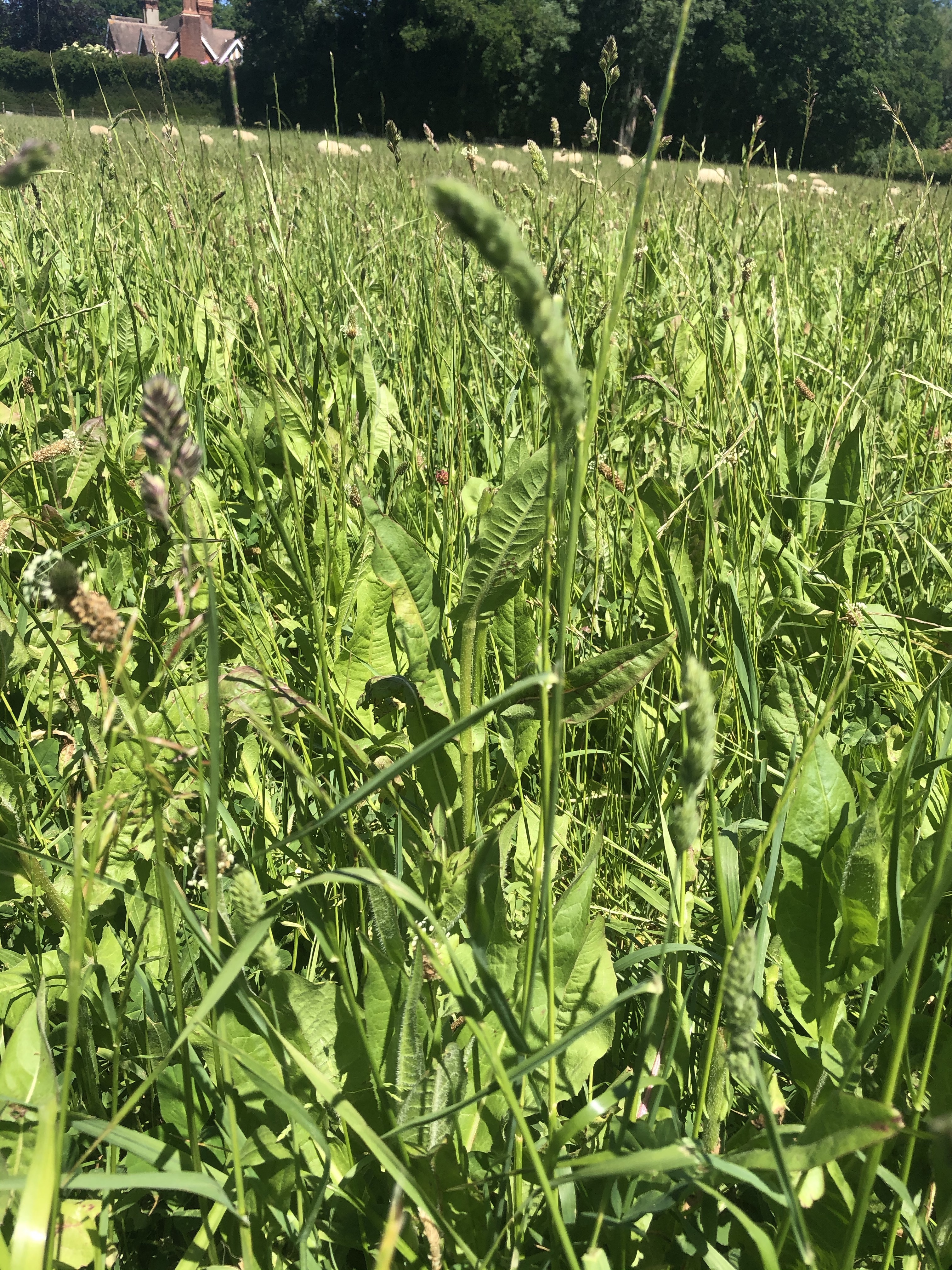This period of warm, settled weather has created a window for hay making. But while it’s always a relief to get hay in the barn in dry conditions, early cutting can come with its own hazards.
Some earlier hay crops like autumn sown westerwolds and Italian ryegrass are not as far through their life cycle as in normal years. We have seen hay crops tedded twice and dry enough to bale within 5 days with a low overall moisture content. However the nodes on each plant stalk, if pinched, still show signs of moisture which can cause issues during storage. Care must be taken when storing this early hay to ensure it is not heating up in the stack once confided to the barn.


Grazing Young Herbal Ley Swards
We have seen some resilient growth from our deeper rooting herbal leys this spring, despite the difficult conditions last autumn and winter. Tom Day in Kent has told us that while his permanent pasture is drying out on baked clay soils, his herbal ley is still providing lush grazing.

However be aware that overgrazing young autumn or early sown spring herbal leys, especially with sheep, can lead to a loss of plant species in the sward and an ultimate lack of diversity in the ley.
There may be a temptation to set stock leys this spring, to make the most of the forage during this dry period, but this can lead to overgrazing of these young swards. Some of the more delicate species, such as Sainfoin and Birdsfoot Trefoil and those that grow from a crown above the ground like Chicory and Plantain can be damaged and ultimately lost from the sward.
Try to manage the grazing to allow areas to be back fenced and rested after grazing, encouraging quicker regrowth.
Mob grazing is an extreme example of this which can show superb results, especially in dry conditions. Leaving a reasonable length of sward in place can help to trap moisture at ground level. Make use of morning dews and reduce transpiration.

Where this is not feasible, simply splitting a field in half or quarters with an electric fence can also help speed up the recovery of the sward after grazing.